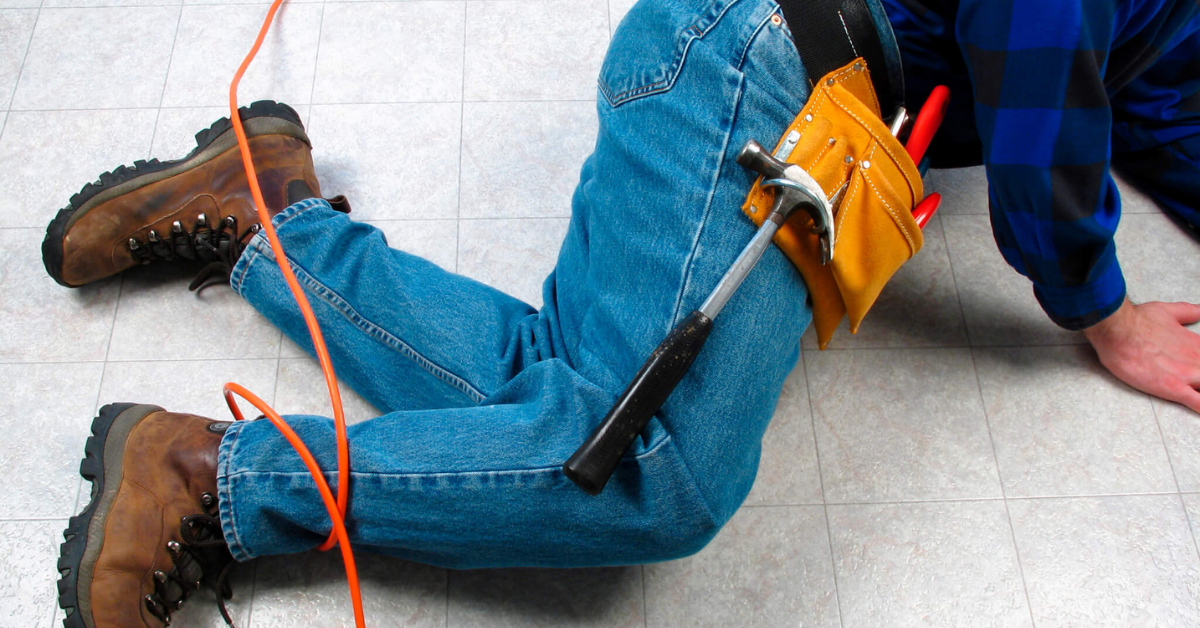From an early age we learn it is polite to pick up after ourselves, and while this is common practice at home, it should also be reflected in the workplace. It’s not only distracting to work in a cluttered environment, but it can also be hazardous. From tools left in the wrong place to spills left on the ground, poor housekeeping can put yourself and your colleagues at risk.
According to the U.S. Department of Labor, slips, trips, and falls account for 15 percent of all accidental deaths and are the second highest cause of fatalities next to motor vehicle accidents. These types of injuries can be a result of poor housekeeping, so it is important to implement an effective housekeeping plan for your facility. Occupational Health & Safety Magazine recommends these five steps to a safer work site:
- Identify potential causes of slips, trips, and falls at your work site. Causes may include:
- Slippery or uneven walking surfaces
- Loose flooring or carpeting
- Clutter or trash in walkways
- Inadequate lighting
- Unexpected placement of equipment
- Damaged or improper use of ladders or step stools
- Electrical cords or cables
- Weather hazards (rain, ice, sleet, and snow)
- Devise a plan to eliminate potential hazards. Once you understand the nature of the potential hazards, develop a strategy to eliminate these problems. The plan may involve:
- Assigning cleaning/tidying responsibilities to individual or groups of employees
- Reorganizing the workspace so furniture or other objects do not create obstacles
- Creating and using extra space for storage of tools and materials
- Repairing damaged floors or walking surfaces
- Creating traction on slippery surfaces
- Ensuring that employees wear appropriate footwear
- Keeping work areas and passages well-lit
- Devising a clear notification process for employees to report dangerous conditions
- Establishing housekeeping procedures as part of a daily routine
- Train employees in good housekeeping practices. To put the housekeeping plan into action, employers should have mandatory training programs for all employees that give a clear picture of the end goal. Good housekeeping can not only keep everyone safe, but also boost morale and productivity, making for a more pleasant work environment.
- Recognize and reward employees for adhering to the plan. Find out what motivates your employees to adhere to housekeeping plans and create recognition or reward programs around those factors. Be sure to reward and recognize employees that are honest about slip, trip, and fall injuries or near misses and those who come up with ideas to improve safety. If you only reward those who have had an accident-free year or quarter, it might lead to under-reporting.
- Stay vigilant. A good housekeeping plan continually evolves. Schedule regular reviews of the work site to assess whether your current plan is covering all the bases and how well employees are adhering to the plan. Also remember to organize periodic refresher training programs and keep employees involved in safety-promoting activities. This will help them remain alert to hazards and get the message that good housekeeping and a culture of safety is a true priority for the company.
Employee safety should be central to your organization’s mission. Cleaning up after a project, storing materials in their proper places or salting an icy walkway are all examples that contribute to that ultimate goal. Good housekeeping practices can save time, money and space, while also improving productivity, quality and, most importantly, safety.







